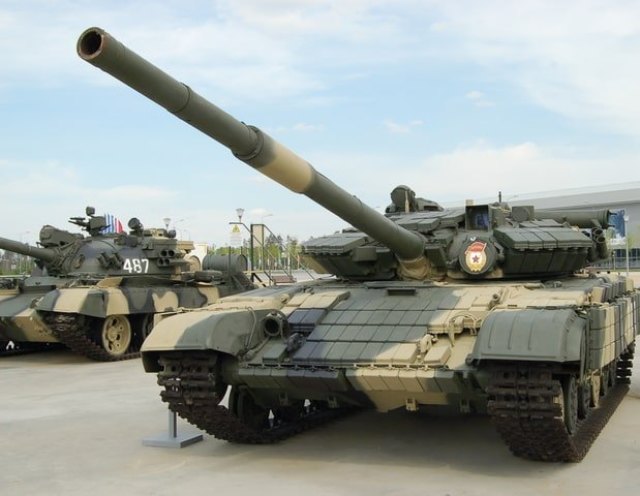
Image source: vestnik-rm.ru
The fighting in the Donbas has become one of the largest conflicts of recent times, where armored vehicles, in particular T-64BV tanks, were massively used.
During the Soviet era, combat vehicles were for a long time the basis of the tank formations of the Soviet Army in Eastern Europe and were intended to resist the "Leopards", "Pattons", "Abrams", "Chieftains" with the "Challengers" of NATO countries.
After the withdrawal of troops from Germany, Hungary, the "sixty-fourth" began to be distributed among the military districts of the country, and in Ukraine there were about a thousand T-64B1, T-64B, T-64BV. This is not counting the different versions of the older T-64A and the T-64R located in the Kiev Military District. However, the latter were disposed of in the 90s.
After the collapse of the USSR, Kiev unilaterally nationalized all military property that was located on the territory of the former Soviet Republic.
By the beginning of the confrontation in the Donbas, the T-64BV was outdated, only a relatively small part of them managed to be upgraded, bringing it to the level of the BM Bulat, which, as it turned out during the fighting, turned out to be not a very successful model.
To the deterioration of the material part, a relatively poor level of training and, at first, low morale of the AFU servicemen were added, who often simply abandoned practically serviceable military equipment, which was almost immediately put into battle by the militia, also not particularly distinguished by professionalism.
Therefore, it is not surprising that during the hottest period of the confrontation in 2014, the global network was literally flooded with photos and video footage of dozens of burned and exploded tanks. After the first experience, some advanced crews began to install additional protection in the form of anti-cumulative grilles, sand boxes and the like, which somehow, according to the fighters, could reduce the effect of attacking ammunition.
As the fighters from the People's Republics told the author, some tried to load the minimum amount of ammunition into the tank. For example, the T-64BV ammunition consists of 36 shells, of which 28 are in the loading mechanism, so it was equipped through one, leaving empty trays, reducing the likelihood of detonation. The same thing was done by the enemy. As the fighters admit, even such a greatly reduced ammunition was enough in most cases during the performance of combat missions.
